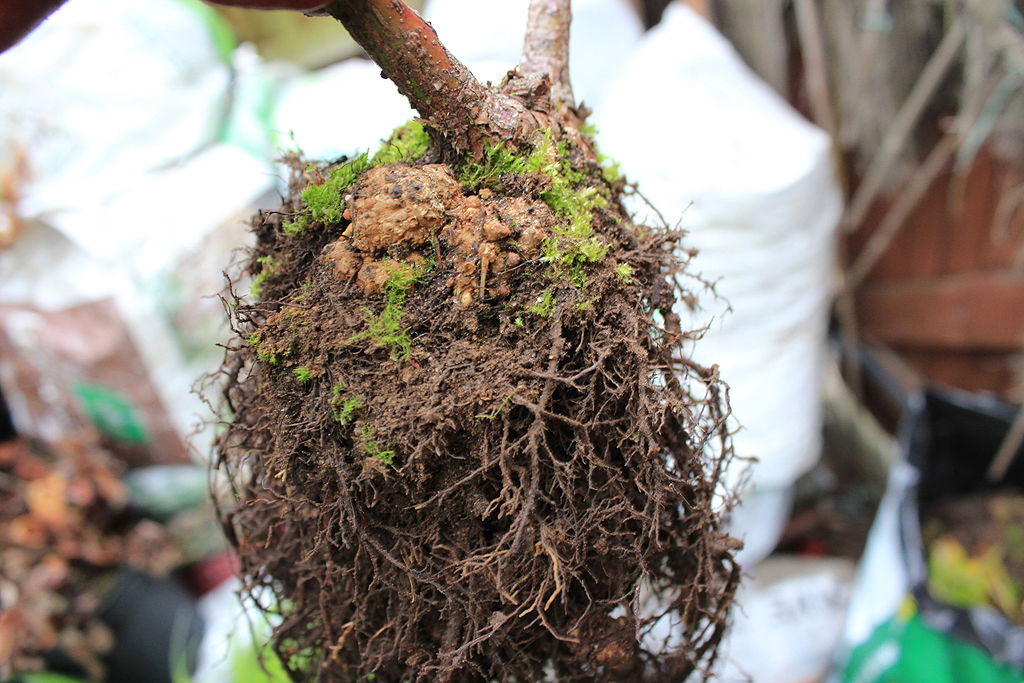Introduction
Crown gall is a tree disease of many woody shrubs, and some herbaceous plants. The disease is caused by the bacterium Agrobacterium tumefaciens, a soil-borne bacterium that is normally associated with the roots of various plants.
Hosts
More than 93 plant families are susceptible to crown gall. Infections can often be observed on woody plants, including fruit and nut trees. They can also occur on ornamental woody crops, such as roses, Marguerite daisies, and chrysanthemums. Infections are especially common in the rose family. Vines and canes, such as grapevines, blackberries, and raspberries, are vulnerable to infection as well. Marguerite daisies, chrysanthemums, and grapevines can become infected systemically. Occasionally, crown galls can be found on field crops, such as cotton, sugar beets, tomatoes, beans, and alfalfa.
Disease Cycle
When a plant is infected, the size of the initial growth depends on the amount of inoculum present. If a large number of bacterium cells invade a plant wound, the disease will be more severe, and a large gall will develop at the infection site. Plants that are systemically infected will harbor the bacterium for extended periods of time. Injuries to the tissue that are induced by mechanical wounding, improper pruning cuts, or frost will elicit new infections, with numerous galls forming along the vascular system of the host.
Causes
In many planting locations, crown gall bacteria resides on the rhizoplane of woody and herbaceous weeds. The bacteria in the soil are derived from galls that were broken or sloughed off from infected plants. They may also have been disseminated on infected plant material. Irrigation, and rainfall are the primary agents of dissemination. Bacteria can be spread through the use of infected nursery stock as well.
Tilling equipment, and pruning tools can become contaminated after being used to slice through galls at or near the base of infected trees. If the tools are not properly disinfected, they can easily transmit the bacteria when applied to other plants. Trees may also be infected if they are planted in the same location where an infected tree once stood.
Plant wounds sustained through cultivation practices, such as mowing or weed removal, serve as access points for crown gall bacteria. Tissues injured by frost are also prone to infection. Grafting and pruning prior to transplanting can create additional wounds through which the bacteria may invade susceptible plants.
Symptoms
Abnormal growths appear as galls on roots, and at the crown of woody plants. Young galls may be smooth, and somewhat spongy. Galls become rough, hard, and woody as they mature. Unlike insect galls, which are hollow in the center, crown galls are solid throughout. Galls vary in size: they can range from ¼ of an inch to just over an inch in diameter. After the first year, galls appear replete with cavities, and become friable. Insects such as earwigs commonly reside within these cavities.
Crown gall often results in a loss of yield on select trees and shrubs when seedlings are infected. Infected plants may be stunted due to the disruption of their vascular system, which impedes the flow of water and nutrients from the roots. Trees with chronically diseased root systems may lack vigor, and experience a reduction in foliage. When a mature tree becomes infected, secondary growths called epicormic sprouts will appear from the root system near the trunk. These growths are symptomatic of severe root infection.
Prevention & Management
- When planting, avoid selecting trees or shrubs that exhibit symptoms of gall formation near the crown, soil line, or graft union. Select resistant cultivars when planting in or near infested areas.
- Several transgenic crop plants, including grapevines and fruit trees, have been developed that express resistance to crown gall. They are available for commercial use in nurseries, and garden centers across the United States.
- When pruning susceptible plants, avoid creating wounds that are in close proximity to the soil.
- Remove severely infected plants, disposing of as many roots as possible.
- Avoid wounding of susceptible plants through cultivation practices, such as mowing, tilling, or weed removal.
- Control weeds, and limit populations of insects and nematodes that feed on roots.
- Some crown gall infections can be eradicated using chemicals, particularly creosote-based compounds, copper-based solutions, and oxidants such as sodium hypochlorite. The use of these chemicals is often labor intensive and costly. They are also ineffective against systemically infected plants. As such, chemicals are seldom used for the control of crown gall.
- Certain strains of the bacterium are sensitive to the antibiotic agrocin, which is produced in Agrobacterium radiobacter, a closely related soil-borne bacterium that does not infect plants. The agrocin can be used as a preventative treatment during planting.
Additional Resources:
http://www.apsnet.org/edcenter/intropp/lessons/prokaryotes/pages/crowngall.aspx
Image licensed under the Creative Commons Attribution-Share Alike 4.0 International license.


